-

新人教版高中英语选修2Unit 5 Reading for writing教学设计
你校英语报计划出版一期急救常识专刊,现面向全校学生公开征集稿件,你有意参加。请你根据下面提示内容,用英语写一篇短文,介绍在车祸现场对伤者进行急救的方法和步骤。1.确保现场的安全;2.询问伤者,确保其呼吸正常;3.检查伤口,如流血则应采取止血措施;4.如需急救,确保其处于康复位置。注意:1.词数80左右;2.可以适当增加细节,以使行文连贯。参考词汇:康复位置 recovery positionAs we all know, having a knowledge of first aid can make a great difference in our daily life. If a traffic accident happens and someone is injured, the following steps can be used to treat the injured.In the first place, we should make sure that the accident scene is safe so that we won’t get hurt. We should ask the injured person if he is OK, and see if he is breathing. What’s more, we should check for cuts and wounds. If he is bleeding badly, it is vital that we should try to stop the bleeding by applying pressure to the injury. This is because if a person loses too much blood, he may die. If necessary, take the injured person to the hospital as soon as possible.Do remember: when giving first aid, please be sure to place the person in a recovery position.

新人教版高中英语选修2Unit 3 Reading for writing教学设计
The theme of this part is to write an article about healthy diet. Through reading and writing activities, students can accumulate knowledge about healthy diet, deepen their understanding of the theme of healthy diet, and reflect on their own eating habits. This text describes the basic principles of healthy diet. The author uses data analysis, definition, comparison, examples and other methods. It also provides a demonstration of the use of conjunctions, which provides important information reference for students to complete the next collaborative task, writing skills, vivid language materials and expressions.1. Teach Ss to learn and skillfully use the new words learned from the text.2. Develop students’ ability to understand, extract and summarize information.3. Guide students to understand the theme of healthy diet and reflect on their own eating habits.4. To guide students to analyze and understand the reading discourse from the aspects of theme content, writing structure, language expression, etc., 5. Enable Ss to write in combination with relevant topics and opinions, and to talk about their eating habits.1. Guide students to analyze and understand the reading discourse from the aspects of theme content, writing structure, language expression, etc.2. Enable them to write in combination with relevant topics and opinions, and to talk about their eating habits.3. Guide the students to use the cohesive words correctly, strengthen the textual cohesion, and make the expression fluent and the thinking clear.Step1: Warming upbrainstorm some healthy eating habits.1.Eat slowly.2.Don’t eat too much fat or sugar.3.Eat healthy food.4.Have a balanced diet.Step2: Read the passage and then sum up the main idea of each paragraph.

新人教版高中英语选修2Unit 3 Using langauge-Listening教学设计
1. How is Hunan cuisine somewhat different from Sichuan cuisine?The heat in Sichuan cuisine comes from chilies and Sichuan peppercorns. Human cuisine is often hotter and the heat comes from just chilies.2.What are the reasons why Hunan people like spicy food?Because they are a bold people. But many Chinese people think that hot food helps them overcome the effects of rainy or wet weather.3.Why do so many people love steamed fish head covered with chilies?People love it because the meat is quite tender and there are very few small bones.4.Why does Tingting recommend bridge tofu instead of dry pot duck with golden buns?Because bridge tofu has a lighter taste.5 .Why is red braised pork the most famous dish?Because Chairman Mao was from Hunan, and this was his favorite food.Step 5: Instruct students to make a short presentation to the class about your choice. Use the example and useful phrases below to help them.? In groups of three, discuss what types of restaurant you would like to take a foreign visitor to, and why. Then take turns role-playing taking your foreign guest to the restaurant you have chosen. One of you should act as the foreign guest, one as the Chinese host, and one as the waiter or waitress. You may start like this:? EXAMPLE? A: I really love spicy food, so what dish would you recommend?? B: I suggest Mapo tofu.? A: Really ? what's that?

新人教版高中英语选修2Unit 4 Learning about Language教学设计
This section guides students to pay attention to the typical context of vocabulary use, helps students accumulate vocabulary around the key vocabulary of this unit, and uses the learned words and word chunks in different contexts to deeply understand their meaning and usage, so as to achieve the purpose of review and consolidation.The teaching design activities aim to guide students to pay attention to the typical context in which the target vocabulary is used, as well as the common vocabulary used in collocation, so that students can complete the sentence with correct words. In terms of vocabulary learning strategies, this unit focuses on cultivating students' ability to pay attention to collocation of words and to use word blocks to express meaning.For vocabulary learning, it is not enough just to know the meaning of a single word, but the most important thing is to master the common collocations of words, namely word blocks.Teachers should timely guide students to summarize common vocabulary collocation, such as verb and noun collocation, verb and preposition collocation, preposition and noun collocation, and so on.1. Guide students to understand and consolidate the meaning and usage of the vocabulary in the context, 2. Guide the students to use the unit topic vocabulary in a richer context3. Let the students sort out and accumulate the accumulated vocabulary, establishes the semantic connection between the vocabulary,4. Enable students to understand and master the vocabulary more effectivelyGuiding the Ss to use unit topic words and the sentence patterns in a richer context.

新人教版高中英语选修2Unit 4 Reading for writing教学设计
假定你是英国的Jack,打算来中国旅行,请你给你的中国笔友李华写一封信,要点如下:1.你的旅行计划:北京→泰山→杭州;2.征求建议并询问他是否愿意充当你的导游。注意:1.词数80左右(开头和结尾已给出,不计入总词数);2.可以适当增加细节,以使行文连贯。参考词汇:故宫 the Forbidden City;泰山 Mount TaiDear Li Hua,I'm glad to tell you that 'm going to visit China.First,I am planning to visit Beijing,the capitalof China,where I am looking forward to enjoying the Great Wall,the Forbidden City and somebeautiful parks.Then I intend to go to visit Mount Tai in Shandong Province.I've heard that it is one ofthe most famous mountains in China and I can't wait to enjoy the amazing sunrise there.After that,I amalso going to Hangzhou.It is said that it is a beautiful modern city with breathtaking natural sights,among which the West Lake is a well- known tourist attraction.What do you think of my travel plan? Will you act as my guide? Hope to hear from you soon.

新人教版高中英语选修2Unit 4 Using langauge-Listening教学设计
The theme of the listening section is " talking about scenery and culture along a journey."The part is designed to further lead the students to understand Canadian natural geography and social environment, and integrated into the cultural contrast by mentioning the long train journey from Beijing to Moscow routes. On this basis, the part activates students related travel experience, lets the student serial dialogue, guides the student to explore further the pleasure and meaning of the long journey, and Chinese and foreign cultural comparison.The part also provides a framework for the continuation of the dialogue, which is designed to provide a framework for students to successfully complete their oral expressions, and to incorporate an important trading strategy to end the dialogue naturally.1. Help students to understand and master some common English idioms in the context, and experience the expression effect of English idioms.2. Guide the students to understand the identity of different people in the listening context, and finish the dialogue according to their own experience.3. Instruct the students to use appropriate language to express surprise and curiosity about space and place in the dialogue, and master the oral strategy of ending the dialogue naturally.1. Instruct students to grasp the key information and important details of the dialogue.2. Instruct students to conduct a similar talk on the relevant topic.

新人教版高中英语选修2Unit 5 Learning about Language教学设计
The purpose of this section of vocabulary exercises is to consolidate the key words in the first part of the reading text, let the students write the words according to the English definition, and focus on the detection of the meaning and spelling of the new words. The teaching design includes use English definition to explain words, which is conducive to improving students' interest in vocabulary learning, cultivating their sense of English language and thinking in English, and making students willing to use this method to better grasp the meaning of words, expand their vocabulary, and improve their ability of vocabulary application. Besides, the design offers more context including sentences and short passage for students to practice words flexibly.1. Guide students to understand and consolidate the meaning and usage of the vocabulary in the context, 2. Guide the students to use the unit topic vocabulary in a richer context3. Let the students sort out and accumulate the accumulated vocabulary, establishes the semantic connection between the vocabulary,4. Enable students to understand and master the vocabulary more effectivelyGuiding the Ss to use unit topic words and the sentence patterns in a richer context.Step1: Read the passage about chemical burns and fill in the blanks with the correct forms of the words in the box.

新人教版高中英语选修2Unit 5 Reading and thinking教学设计
The theme of this activity is to learn the first aid knowledge of burns. Burns is common in life, but there are some misunderstandings in manual treatment. This activity provides students with correct first aid methods, so as not to take them for granted in an emergency. This section guides students to analyze the causes of scald and help students avoid such things. From the perspective of text structure and collaborative features, the text is expository. Expository, with explanation as the main way of expression, transmits knowledge and information to readers by analyzing concepts and elaborating examples. This text arranges the information in logical order, clearly presents three parts of the content through the subtitle, accurately describes the causes, types, characteristics and first aid measures of burns, and some paragraphs use topic sentences to summarize the main idea, and the level is very clear.1. Guide students to understand the causes, types, characteristics and first aid methods of burns, through reading2. Enhance students’ ability to deal withburnss and their awareness of burns prevention3. Enable students to improve the ability to judge the types of texts accurately and to master the characteristics and writing techniques of expository texts.Guide students to understand the causes, types, characteristics and first aid methods of burns, through readingStep1: Lead in by discussing the related topic:1. What first-aid techniques do you know of ?CPR; mouth to mouth artificial respiration; the Heimlich Manoeuvre

新人教版高中英语选修2Unit 5 Using langauge-Listening教学设计
The theme of this section is to learn how to make emergency calls. Students should learn how to make emergency calls not only in China, but also in foreign countries in English, so that they can be prepared for future situations outside the home.The emergency telephone number is a vital hotline, which should be the most clear, rapid and effective communication with the acute operator.This section helps students to understand the emergency calls in some countries and the precautions for making emergency calls. Through the study of this section, students can accumulate common expressions and sentence patterns in this context. 1.Help students accumulate emergency telephone numbers in different countries and learn more about first aid2.Guide the students to understand the contents and instructions of the telephone, grasp the characteristics of the emergency telephone and the requirements of the emergency telephone.3.Guide students to understand the first aid instructions of the operators.4.Enable Ss to make simulated emergency calls with their partners in the language they have learned1. Instruct students to grasp the key information and important details of the dialogue.2. Instruct students to conduct a similar talk on the relevant topic.Step1:Look and discuss:Match the pictures below to the medical emergencies, and then discuss the questions in groups.

小学美术人教版二年级上册《第9课蜻蜓飞飞》教案说课稿
1、引导学生观察蜻蜓,抓住蜻蜓的特点进行绘画创作。2、充分发挥学生的想象和创造能力。课前准备:教具:课件、模具、图片、有关作品。学具:作业纸、画笔。教学过程一、导入课题1.教师出示一张纸,变成折纸蜻蜓激起学生兴趣。2.出示课题:蜻蜓飞飞二、新授课1、交流课前收集的资料。请学生谈谈收集的关于蜻蜓的知识,教师补充介绍。2、学生仔细观察蜻蜓模具,结合课件图片小组内交流讨论:蜻蜓是由哪些部分组成的,各有怎样的特点?
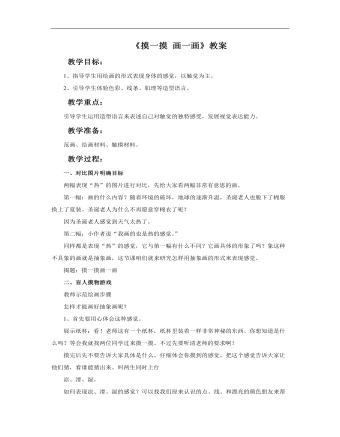
小学美术人教版一年级下册《第6课摸一摸画一画》教案说课稿
一、对比图片明确目标两幅表现“热”的图片进行对比,先给大家看两幅非常有意思的画。第一幅:画的什么内容?随着环境的破坏,地球的逐渐升温,圣诞老人也脱下了棉服换上了夏装。圣诞老人为什么不再愿意穿棉衣了呢?因为圣诞老人感觉到天气太热了。第二幅:小作者说“我画的也是热的感觉。”同样都是表现“热”的感觉,它与第一幅有什么不同?它画具体的形象了吗?象这种不具象的画就是抽象画,这节课咱们就来研究怎样用抽象画的形式来表现感觉。揭题:摸一摸画一画
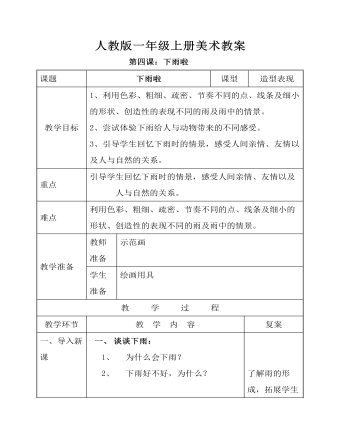
小学美术人教版一年级上册《第4课下雨啦》教案说课稿
1、利用色彩、粗细、疏密、节奏不同的点、线条及细小的形状、创造性的表现不同的雨及雨中的情景。2、尝试体验下雨给人与动物带来的不同感受。3、引导学生回忆下雨时的情景,感受人间亲情、友情以及人与自然的关系。
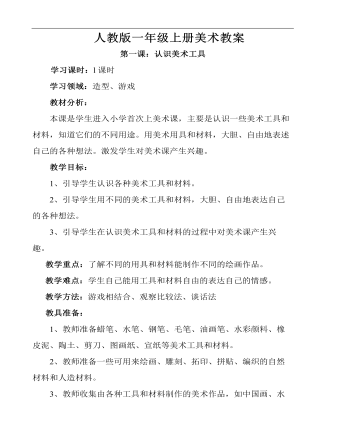
小学美术人教版一年级上册《第1课认识美术工具》教案说课稿
1、引导学生认识各种美术工具和材料。2、引导学生用不同的美术工具和材料,大胆、自由地表达自己的各种想法。3、引导学生在认识美术工具和材料的过程中对美术课产生兴趣。教学重点:了解不同的用具和材料能制作不同的绘画作品。教学难点:学生自己能用工具和材料自由的表达自己的情感。教学方法:游戏相结合、观察比较法、谈话法
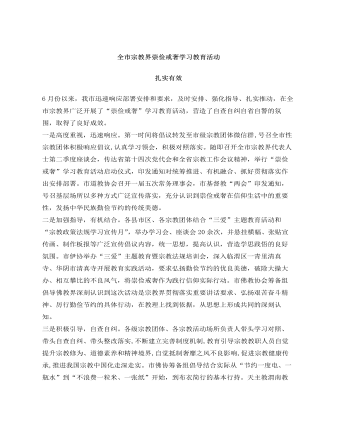
全市宗教界崇俭戒奢学习教育活动总结汇报
天主教渭南教区举行“崇俭戒奢”教育活动座谈会,进一步统一思想认识,清醒认识宗教领域贪大求奢、借教敛财、铺张浪费等不良风气的严重危害,突出问题导向,坚持自查自改,要求秉持俭朴理念,发扬勤俭节约、朴实无华、清净庄严等优良传统,使厉行节约、崇尚简朴的理念在全市天主教界蔚然成风。四是固化经验,常抓抓常。按照省民宗委、各全省性宗教团体统一部署要求和总体安排,一是结合“三爱”主题教育和爱国主义教育活动,广泛深入推进“崇俭戒奢”宣传教育,以实际行动响应倡议,以实际成效树立形象,扎实推进我国宗教中国化。二是引导各级宗教团体持续拓展中国化内涵,把“三爱”主题教育与“四进”活动相结合,突出自身特点、时代精神、中国特色,推动“崇俭戒奢”教育活动深入人心、落地见效。三是督导各宗教场所提高站位、深化认识,发扬宗教适应社会、服务社会的优良传统,增强政治自觉和行动自觉,为社会主义现代化和中华民族伟大复兴更好的发挥宗教积极作用。
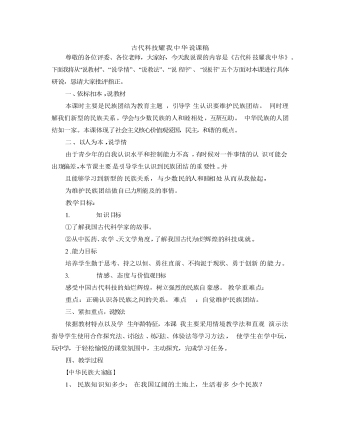
人教部编版道德与法制五年级上册古代科技,耀我中华说课稿
写 了中国历 史的辉煌篇章 。你知道哪些相关的事例呢 ?3、故事屋 : “彝海结盟”4 、小提示 :正是由于有各民族人民的艰苦奋斗 、团结互助 ,才有今天 这个伟大的多 民族国家一一中国。各民族在长期的历史发展 中,形成了 一 种相互依存的密切联系 ,我过经济今天取得的成就是各民族共同努力的结 果。5、相关链接 :课本第 58 页。6 、小提示:在长期实践和不 断交往中 ,各民族相互借鉴、相互欣赏 、 相互促进,共同创 造了光辉灿烂的中华文化 。7、活动园 :下面是 一一些同学查找到的各民族对中华文化贡献 的事例 , 你还能举出其他的事例吗 ?小结:我国是一个统一的多 民族国家,在长期的 生活和实践过程当中 , 各民族相互交往 交流交融 ,相互影响 、相互促进,共同努力建立和建设 了 社会主义新中国,并共同床在了 光辉灿烂的中华文 化。我们各民族是一个 共同体 ,谁也离不开谁。
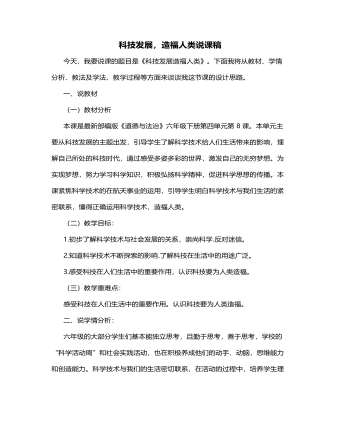
人教部编版道德与法制六年级下册科技发展,造福人类说课稿
3.科学的佐证:伽利略望远镜播放视频:《不说不知道,17世纪的伽利略用这和望远镜证实了日心说》。4.指名交流:伽利略的望远镜对当时有何意义?5.出示资料:伽利略遭到教会的谴责和审判。思考:哥白尼和伽利略在追求真理的过程中表现出了怎样的精神?活动二:伟大航行1.了解我国古代对宇亩的认识:天圆地方说。2.航海家的积极探索:你知道哪些著名的航海家?收集相关资料,说说它们的故事。根据交流出示相关资料。3.整理15世纪初开始的航行大事。4.观看视频,师生讨论:新航路的开辟有哪些作用?5.小结活动三:对自身的认识1.过渡:人类在认识自然界的同时,也在不断深化对自身的认识。2.人类起源的说法:(1)神创论:你了解哪些关于神创作人类的故事?(2)自然进化论,也就是大家比较认可的一和说法,人是从张猴进化而来的。
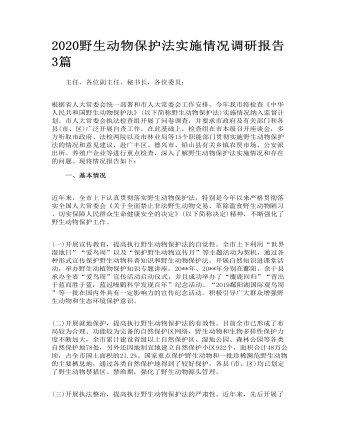
2020野生动物保护法实施情况调研报告3篇
(一)开展宣传教育,提高执行野生动物保护法的自觉性。全市上下利用“世界湿地日”“爱鸟周”以及“保护野生动物宣传月”等主题活动为契机,通过各种形式宣传保护野生动物科普知识和野生动物保护法。开展自然知识进课堂活动,举办野生动植物保护知识专题讲座。20**年、20**年分别在鄱阳、余干县承办全省“爱鸟周”宣传活动启动仪式,并且成功举办了“麋鹿回归”“青出于蓝而胜于蓝:蓝冠噪鹛科学发现百年”纪念活动、“2019鄱阳湖国际观鸟周”等一批在国内外具有一定影响力的宣传纪念活动。积极引导广大群众增强野生动物和生态环境保护意识。
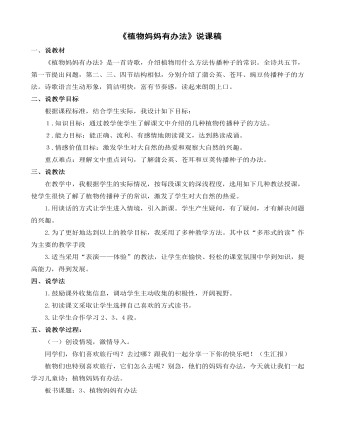
《植物妈妈有办法》说课稿
“纷纷出发”,他们会去哪呢?我来采访一下小蒲公英,你想去哪儿?(公园,田野,树林……)那用我们第一小节的一个词就叫“四海为家”。(四海为家即是走到哪儿,种子就在哪儿生根发芽)
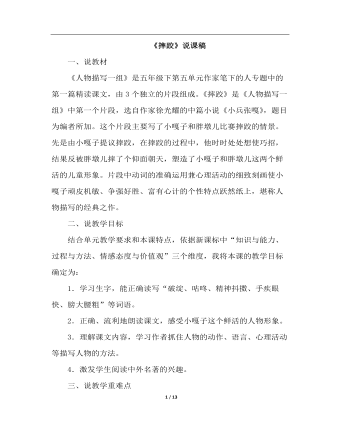
人物描写一组(说课稿)
二、说教学目标结合单元教学要求和本课特点,依据新课标中“知识与能力、过程与方法、情感态度与价值观”三个维度,我将本课的教学目标确定为:1.学习生字,能正确读写“破绽、咕咚、精神抖擞、手疾眼快、膀大腰粗”等词语。2.正确、流利地朗读课文,感受小嘎子这个鲜活的人物形象。3.理解课文内容,学习作者抓住人物的动作、语言、心理活动等描写人物的方法。4.激发学生阅读中外名著的兴趣。三、说教学重难点教学重点:感受小嘎子这个人物形象,体会作家描写人物的方法教学难点:体会作家描写人物的方法,并在习作中学习运用。四、说教法和学法科学合理的教学方法能使教学效果事半功倍,达到教与学的和谐完美统一。基于此,我准备采用的教法是讲授法,点拨法。讲授法教师可以系统的传授知识,充分发挥教师的主导作用。学法上,我贯彻的指导思想是把“学习的主动权还给学生”,倡导“自主、合作、探究”的学习方式,具体的学法是讨论法、朗读法和勾画圈点法,让学生养成不动笔墨不读书的良好阅读习惯。
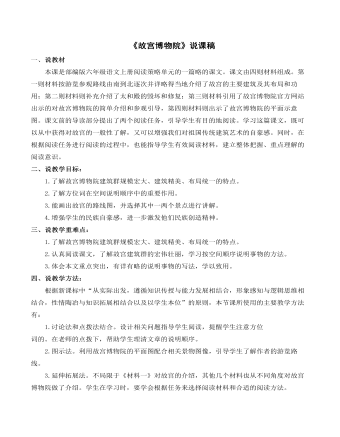
《故宫博物院》说课稿
说教学目标:? 1.了解故宫博物院建筑群规模宏大、建筑精美、布局统一的特点。?2.了解方位词在空间说明顺序中的重要作用。?3.能画出故宫的路线图,并选择其中一两个景点进行讲解。?4.增强学生的民族自豪感,进一步激发他们民族创造精神。三、说教学重难点:1.了解故宫博物院建筑群规模宏大、建筑精美、布局统一的特点。?2.认真阅读课文,了解故宫建筑群的宏伟壮丽,学习按空间顺序说明事物的方法。3.体会本文重点突出,有详有略的说明事物的写法,学以致用。四、说教学方法:? 根据新课标中“从实际出发,遵循知识传授与能力发展相结合,形象感知与逻辑思维相结合,性情陶冶与知识拓展相结合以及以学生本位”的原则,本节课所使用的主要教学方法有:1.讨论法和点拨法结合。设计相关问题指导学生阅读,提醒学生注意方位词的。在老师的点拨下,帮助学生理清文章的说明顺序。


